The Canon EF is a special film camera. Because of its name, if you type Canon EF in any search bar, you’ll find all the existing Canon EF lenses before you find anything about this camera. However, if you’re a seasoned computer hacker like me and add the terms film camera to the research, you may find some information about this nice piece of camera history.
The Canon EF film camera was produced between 1973 and 1978 and is the first and last Canon camera to feature a vertical-travel Copal metal shutter (that’s a mouthful). It also uses a pretty unique hybrid shutter speed system, both mechanical and electrical.
It’s often referred to as the Black Beauty and is considered to be a simplified version of the F-1. Most notably, it doesn’t have the interchangeable viewfinder, it can’t be attached to a power winder and the shutter speed tops at 1/1000.
But this doesn’t mean that the Canon EF doesn’t have anything to offer. In fact, I really like the simplicity of this camera.
I started the analog chapter of my photography journey with a Canon A-1. Since I live in the alps, my valiant A-1 would brain freeze as soon as the temperature would get near 0° Celsius (math it out, Fahrenheitists), so I decided to look for a mechanical camera that would sport my huge collection of four Canon FD lenses. Don’t worry, G.A.S. quickly kicked in and I already have too many cameras as of the writing of this article.
First look at the Canon EF
Let’s start with the design of this camera. It’s a tank, like a Crusader or a B1 but smaller. It is heavy for a 35mm camera because of its metal build.
The Canon EF doesn’t implement anything revolutionary in its design. It focuses on what’s important and that’s what I like about it.
On top, you’ll find your typical layout: the film rewind lever, the ASA dial ranging from 12 to 3200, a LED battery check light, exposure lock, hot shoe flash, shutter speed dial, film advance lever, shutter release button and frame counter. The ASA dial can easily be lifted, so you may want to check it from time to time to make sure it didn’t change.
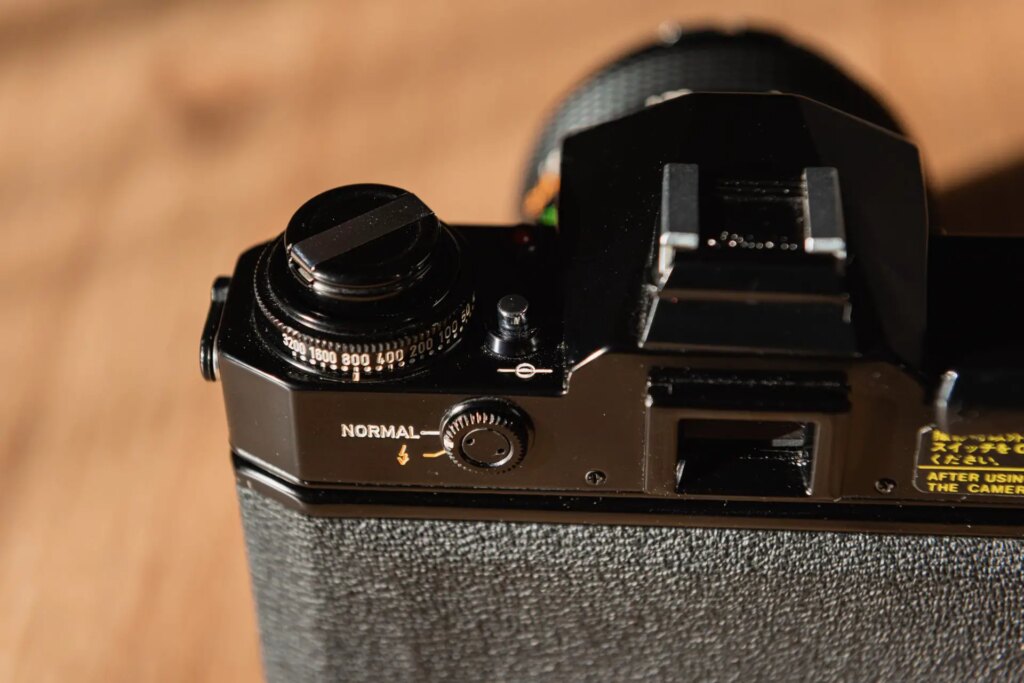
Shutter speed dial and release button
The Canon EF shutter release button has a relatively short travel distance but you can get a good feel of it. The shutter releases somewhere in that travel distance which prevents you from getting motion blur while pressing down. The film advance lever works smoothly and is unobtrusive when not in use.
The shutter speed dial is a real joy to use. It is big and sticks out at the front of the plate. You can easily set your shutter speed on the fly while looking through the viewfinder. You’ll see that some values are white and others are yellow (plus the orange 1/125 which indicates the flash sync speed). Those colours indicate the type of shutter the camera uses but I’ll explain that later.
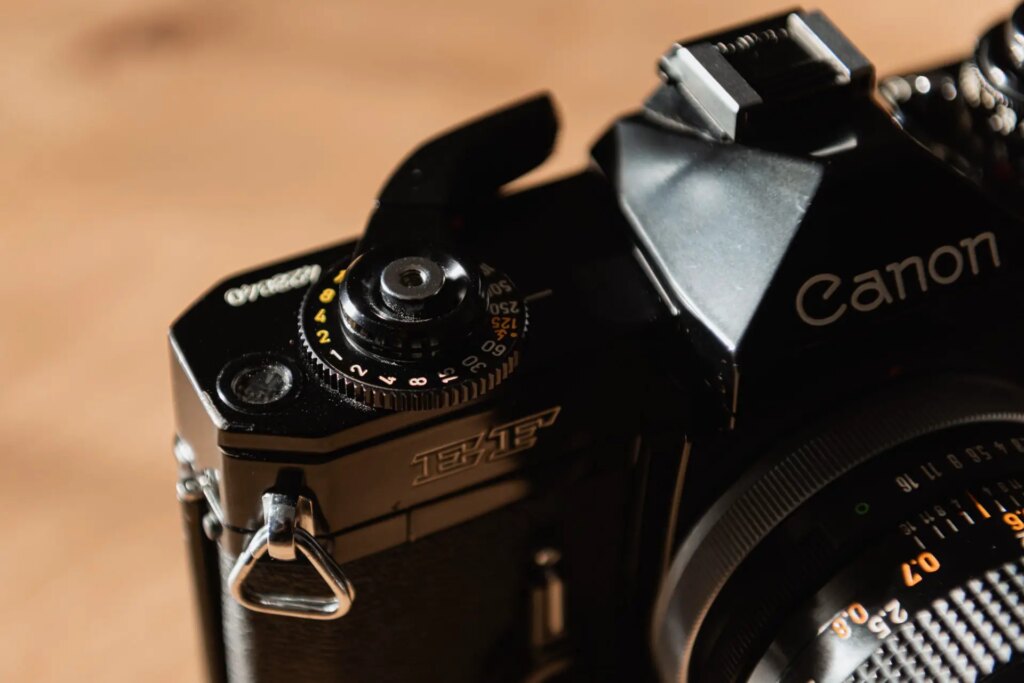
Turning the camera on and off
When setting the switch to On, you activate the light meter and the film advance lever will pop out a few degrees. When switching to Off, you disable the light meter, lock the lever and the shutter release button which is always nice (blurry and overexposed shot number 23, I’m looking at you). There is also a tiny silver button on this switch that enables you to do multiple exposures.
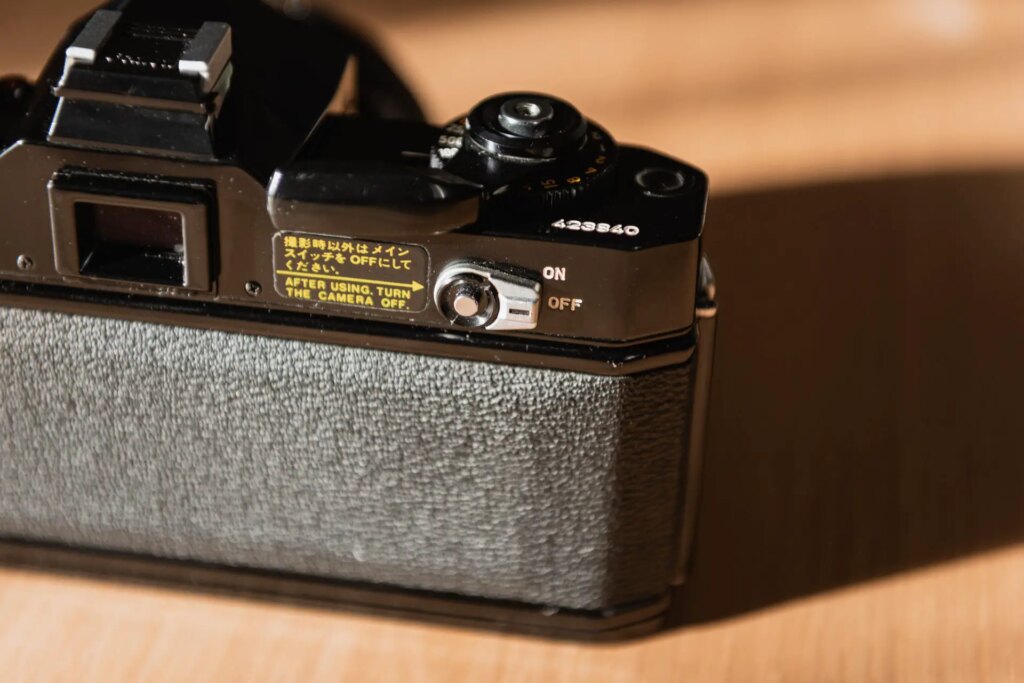
DOF preview, mirror lock-up and timer
On the front of the Canon EF, you’ll find a lever that you can use as DOF preview, mirror lock-up or even self-timer. Yes, it’s a bit confusing at first but it’s nice to have all in one place over time. I could say that a grip like the one on the newer version of the F-1 or the A-1 could have been useful. The weight of the camera makes you want to grip on something from time to time.
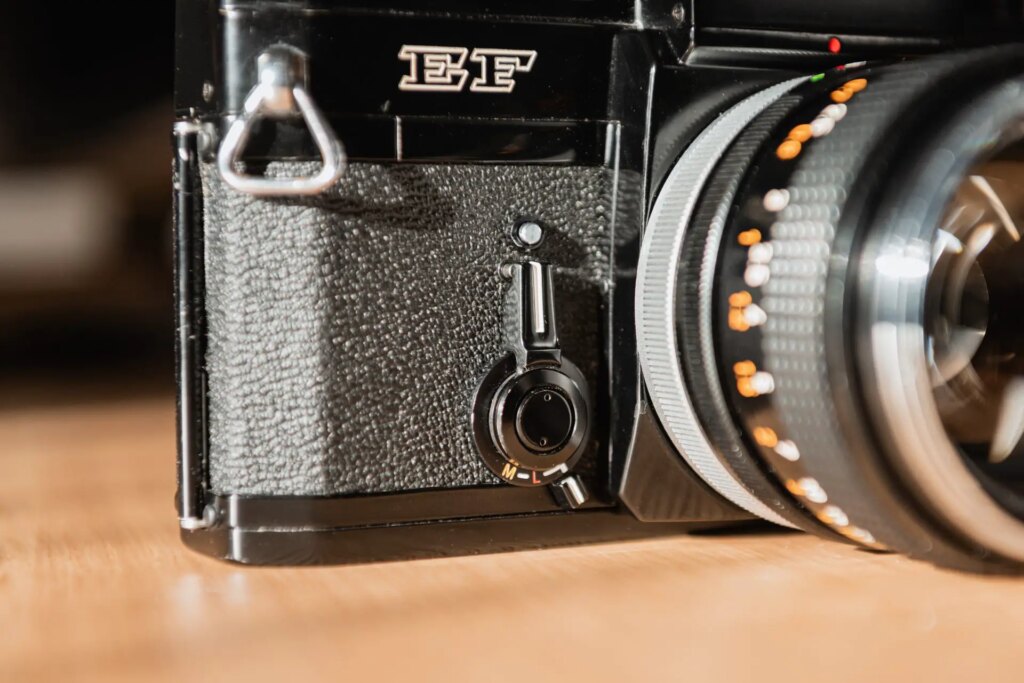
Batteries
On the bottom plate, you’ll find a red battery check button, the film release button and two battery doors. One is supposed to be for the light meter and the other for the shutter. It uses PX 625 1.35 volts mercury batteries. Thanks to an intern regulator, you can use this camera with common 1.5 volt batteries without any modification. What I don’t get here is that, besides not really knowing which battery compartment is connected to which function, it also seems that it still needs both batteries for everything. Let’s say you would just insert one battery for the shutter, it won’t work. You still need to have both but this might only be an issue with my camera.
Using the Canon EF
The Canon EF is a shutter priority camera when used with FD lenses set on A. Otherwise, you can use it manually. After loading your film, you simply advance to frame one without having to release the shutter every time. Nice feature to get into action quickly.
Metering and focusing
The Canon EF has a TTL light meter that is less sensitive at the top of the frame in landscape orientation to compensate bright skies. This means that if you shoot vertically, you should meter the scene horizontally, lock the exposure (if used in shutter priority mode) and recompose in portrait orientation. Otherwise, you just check what aperture the light meter indicates and set it manually on your lens which is easier in the end. Having to keep that exposure lock button pressed while recomposing and focusing is quite the exercise.
Apparently, it is not an easy task to find a Canon EF with a functioning light meter. I have had two copies, both light meters worked at first (me, happy) but died after a short period of time (me, sad).
Focus can be done with a microprism in the center. Newer models also added a split-screen.
Two types of shutter mechanisms
Shutter speeds from 1/1000 to 1/2 seconds and Bulb mode are mechanical. Those from 1 to 30 seconds are electronically controlled. This was designed to reduce the use of the battery and enable the use of the camera even when the batteries are dead. Note that the shutter speeds slower than ½ second will stay at ½ when the batteries are empty.
When using electronically controlled shutter speeds, the red LED on top will flicker during the exposure. It is important to mention that 15 and 30 seconds shutter speeds are actually 16 and 32 seconds to preserve the doubling sequence.
Using the front lever
The front lever has three positions : M, L and a third one that apparently doesn’t deserve a letter. The latter serves as quick DOF preview and sets back as soon as you release the lever. The L position is also a DOF preview but stays locked once the lever is pushed. Lastly the M position, it locks up the mirror but can only be used after locking the L position first. The mirror stays up until set it back with the lever, you’ll get the hang of it.
For the timer, you have to press the pin on top of the lever to be able to set it in timer position. You then fire it off by pressing the shutter release button. It is a mechanical timer and can still be used without batteries. And unlike the Canon A-1 which has an electronic timer, the LED of the Canon EF won’t flicker when the timer is in use.
The shutter slap is pretty loud for a 35mm SLR, but I really like it. It’s probably not suited for the street ninjas out there snapping pictures unnoticed.
Images taken with the Canon EF camera
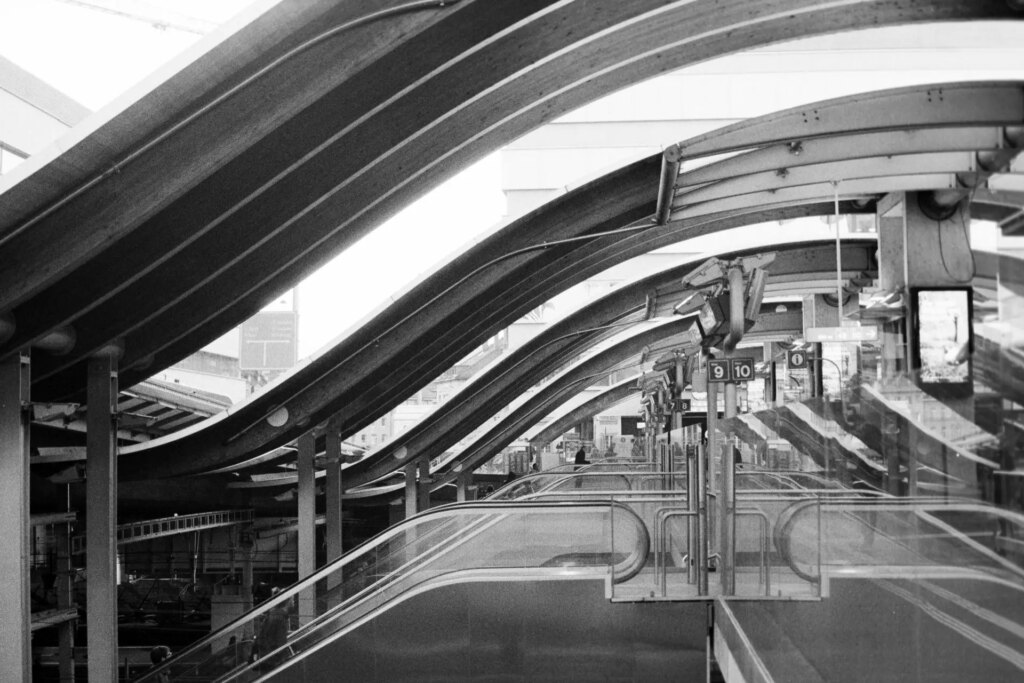

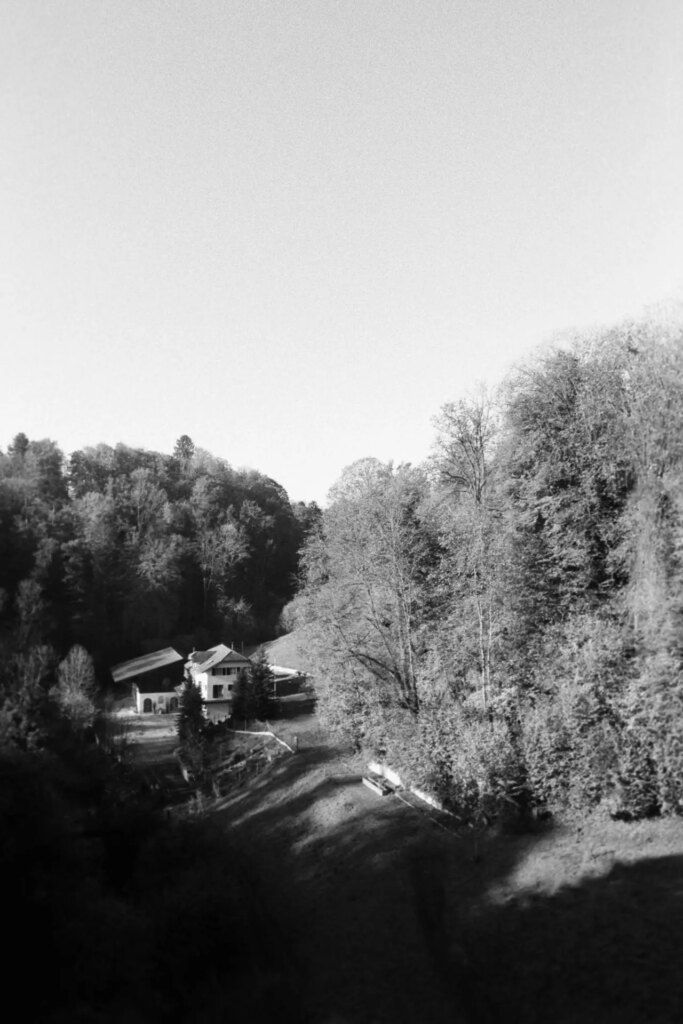
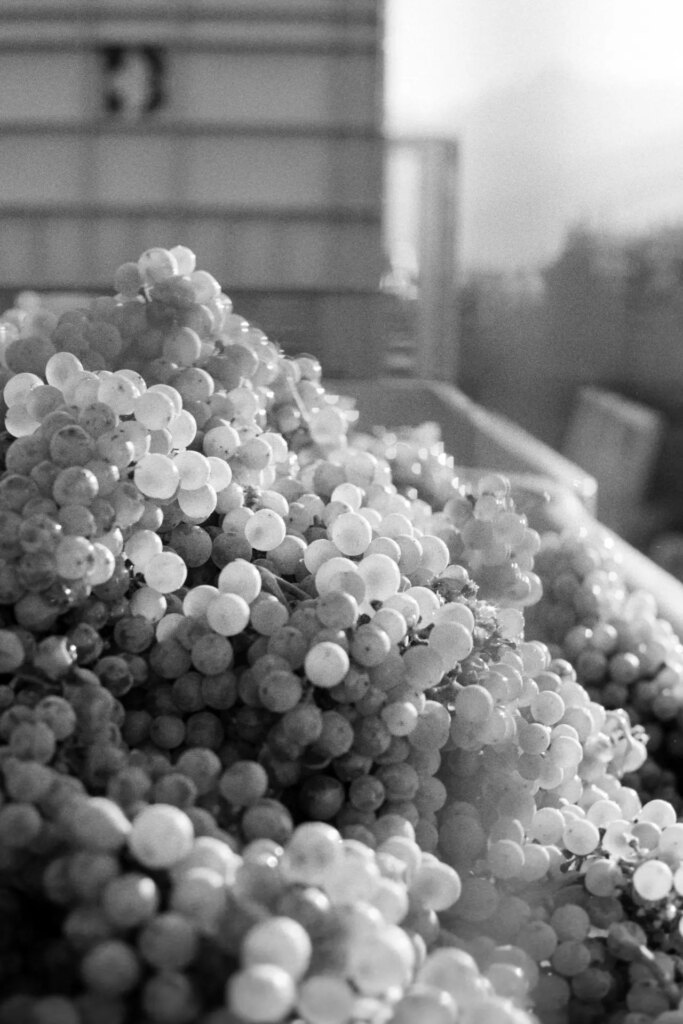
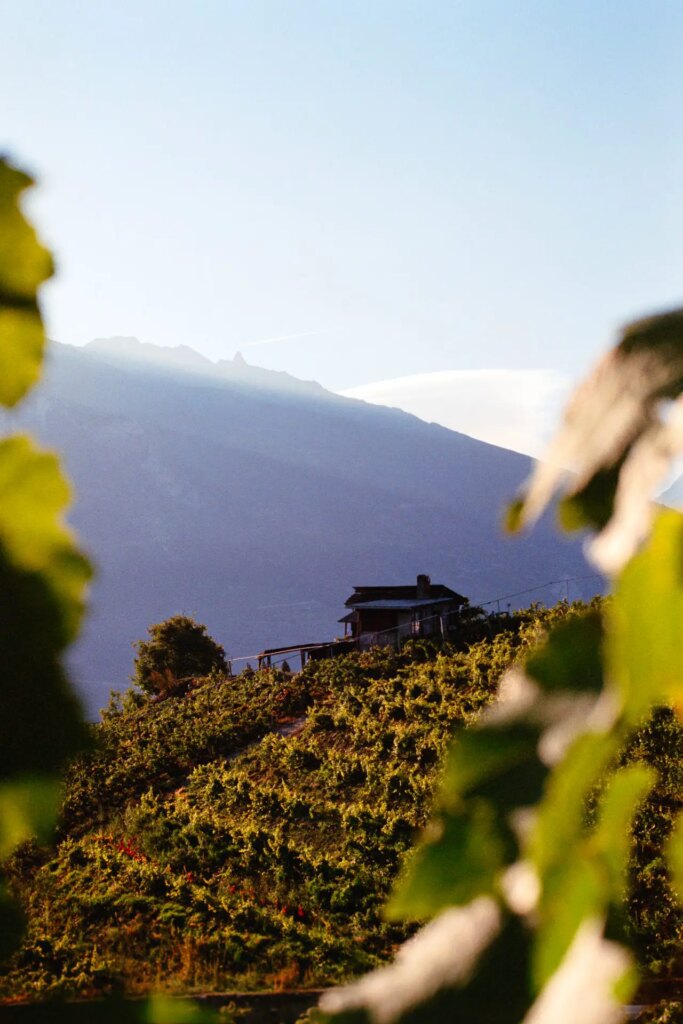
Final words
In summary, it is a semi-electronic metal brick that can be used to take pictures. Technically, there’s everything you need to take pictures. Of course, nothing is perfect. For example, the exposure lock button is oddly placed in my opinion or the ISO dial is offset easily but since my light meter doesn’t work anymore, both points are irrelevant for me. It’s a solid and reliable camera for its age and is an interesting chapter in Canon’s history.
On a daily basis, I don’t use it as much. A non-working light meter slows the process down, so my Canon A-1 is more practical and enables me to be more reactive while wandering around. But I love using it when I have time to take my shots be it at night for long exposures or for landscapes thanks to its ability to lock the mirror.
As the production period is relatively short, you don’t see them as often as other models. They’re not one the popular list of cameras which makes them more affordable than some SLRs. The Canon EF is not THE camera to have, but it is very capable and reliable. If you find a good deal, I can only recommend to get it.
Thank you for reading. I hope you learned something and enjoyed taking time to dive a bit deeper into the history of film cameras. Let me know your thoughts about the Canon EF and if you had the chance to use it !
You can find more film images and more on @thut.thomas.
Until next time 🙂
Share this post:
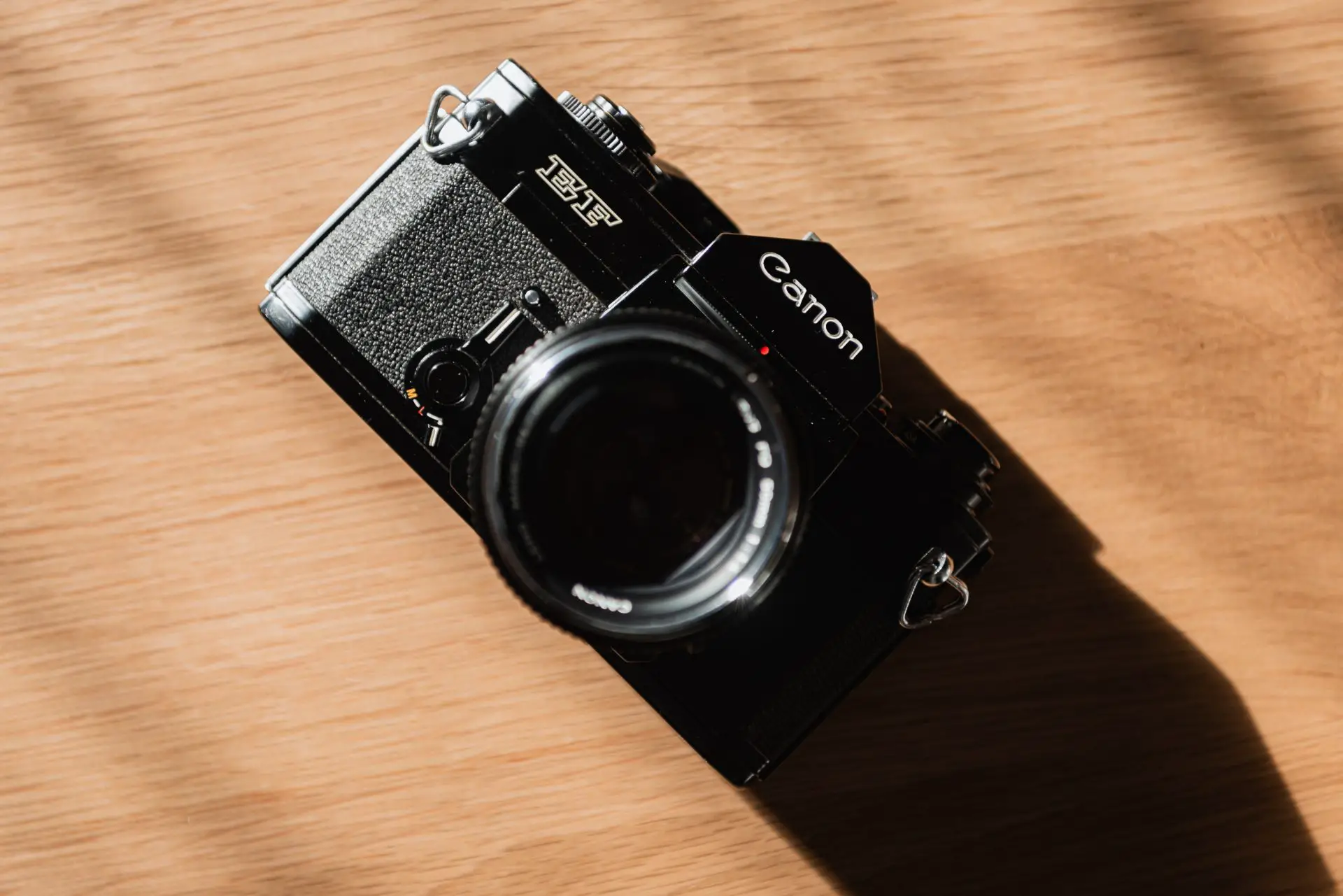








Comments
Bob Janes on Canon EF Camera review – The F-1’s Little Sibling – By Thomas
Comment posted: 06/02/2023
Is the exposure lock a seperate button or is it on the first travel of the shutter release?
Comment posted: 06/02/2023
Comment posted: 06/02/2023
Comment posted: 06/02/2023
Comment posted: 06/02/2023
Sergio on Canon EF Camera review – The F-1’s Little Sibling – By Thomas
Comment posted: 06/02/2023
It was not easy to understand, until I had my "Arsenal offside trap" moment and realized that I already knew all of it.
The body is practically the same of an FTb, with the large time selector switch anticipating that of AE1/AT1.
The way you're using the meter, shutter priority or off, is the same of Canonet QL17 (less easy on a top-level SLR than on a pocketable, fixed optic RF).
So you simply have to forget that it's neither AT1 nor FTb and use it like a QL17, remembering that the primal weighed-area metering system is a bit rude.
It's an interesting experiment of three different ideas, the panzer mechanic of F series, the ergonomy of the forthcoming, late '70s automatic cameras, with the anomaly of the Copal vertical shutter that probably had something more to say (cfr. Contax 139 and so on) but also anticipated the hybrid shutter of F1n. Or, if you prefer, a fascinating dead end branch of an evolutionary tree.
Not the easiest camera to use, but the feeling of an unique living memory of a transition era (for the pedantic philologist) or simply of a damn beautiful black brick.
Comment posted: 06/02/2023
bp_reid on Canon EF Camera review – The F-1’s Little Sibling – By Thomas
Comment posted: 06/02/2023
The EF is an ergonomic disaster area, weighs a ton and, for me just made photographing anything a thoroughly unhappy experience. You'll find it's better than an AE-1 because it has the Aperture displayed in the finder but worse because the finder is darker, there is no way to add a wider and the EF is approximately 1,000 times heavier. Overall, I'd take the AE-1 every single time and I don't even like the AE-1. The electronics are now way past reliable service and the meters and longer exposures are defunct in most that come up for sale now. So an EF is probably a manual camera that doesn't even go to 1s and even if you manage to find one where the electronics aren't fried you'll still need to shell out for 2x PX 625s to use it.
Comment posted: 06/02/2023
DANIEL J CASTELLI on Canon EF Camera review – The F-1’s Little Sibling – By Thomas
Comment posted: 06/02/2023
Your review and description of the EF reminds me of a camera designed by the same committee that had a hand in designing the Wildebeest - it works but...
You like it, it works for you and you're creating with it. Nicely done.
0 degrees C = 32 degrees F. On 2/32023 in my small town here in Connecticut experienced a temp of -30F. for a period of about 14 hours. On Mt. Washinton located in the State of New Hampshire experienced temps at -108 F the same time period.
Comment posted: 06/02/2023
Justin Kingery on Canon EF Camera review – The F-1’s Little Sibling – By Thomas
Comment posted: 06/02/2023
I quite like the shutter dial, too, which is just like the dial on the Leica M5, which sports the best SS dial (not to mention internal meter) of any Leica M. I told you I was an odd duck! I'm lucky that my EF, which I picked up for $5 USD at a yard sale, has a working meter. While it's not an everyday shooter---I prefer cameras from the two series I mentioned in the opening paragraph---it's fun to take out here and there, and I always seem to find something new to love about it---like that gorgeously dampened shutter sound, the super solid film-advance lever, etc.!
Comment posted: 06/02/2023
Castelli Daniel on Canon EF Camera review – The F-1’s Little Sibling – By Thomas
Comment posted: 06/02/2023
The tones and composition of the grapes is my favorite.
Comment posted: 06/02/2023
Comment posted: 06/02/2023
Kodachromeguy on Canon EF Camera review – The F-1’s Little Sibling – By Thomas
Comment posted: 06/02/2023
Comment posted: 06/02/2023
Graham Orbell on Canon EF Camera review – The F-1’s Little Sibling – By Thomas
Comment posted: 06/02/2023
I’m allowed to say that because I own both EOS and earlier Nikon systems. I have my foot in both camps.
Comment posted: 06/02/2023
David on Canon EF Camera review – The F-1’s Little Sibling – By Thomas
Comment posted: 06/02/2023
I bought it because, firstly, it was black, like those Nikons I lusted after. And as soon as I picked one up and looked through the amazingly bright viewfinder, it looked and felt like a perfect fit. It had a discounted price I could afford, after resigning myself to the realization that financially, a Nikon was not in my future. But I instantly loved it and used it for many years, including professionally in several jobs I had as a writer where I could provide photos to accompany my writing. The only real drawback for me was lack of motor drive capability. Other than that, we were a perfect couple!
Even after using it for years I really knew very little about how the EF fit into Canon's stable of cameras and its many unique design features and firsts. To this day, I have to wonder why some of these features, like the Copal vertical metal shutter weren't standard in Canon's higher end bodies. The EF is almost a freak in some regards. But a beautiful freak, at least for me.
Sadly, it was irreparably damaged after a strong wind gust blew it and its tripod over. Otherwise, I might still be shooting with it today. I always wanted another and a couple of years ago I acquired a couple of old ones that I have yet to really put to the test. But I definitely will.
Comment posted: 06/02/2023
Julian on Canon EF Camera review – The F-1’s Little Sibling – By Thomas
Comment posted: 07/02/2023
You are using it, get great shots with it, having fun with it, and I believe this to be the main thing. It all boils down to what makes your day. Great review, thank you for sharing !
Comment posted: 07/02/2023
Danny De Vylder on Canon EF Camera review – The F-1’s Little Sibling – By Thomas
Comment posted: 26/02/2023
A few minor things worth mentioning: no film card holder on the back of the camera, so you’ll have to look for another way to remember what film is in the camera. And knowing when your camera is on, it is always measuring the light, ask for too much attention in normal use. Mine is always OFF, switching it on just before a shot, making the shot and switching it off again, but maybe that’s just me. Happy shooting everybody.
Comment posted: 26/02/2023
Jeff T. on Canon EF Camera review – The F-1’s Little Sibling – By Thomas
Comment posted: 26/08/2023
Comment posted: 26/08/2023
Comment posted: 26/08/2023
Richard Stamats on Canon EF Camera review – The F-1’s Little Sibling – By Thomas
Comment posted: 04/09/2023
I would say I have over 8,000 plus images from the EF and now mostly scanned. It was fun to read your article and all the comments.
Comment posted: 04/09/2023
Joe on Canon EF Camera review – The F-1’s Little Sibling – By Thomas
Comment posted: 15/12/2023
Duncan Waldron on Canon EF Camera review – The F-1’s Little Sibling – By Thomas
Comment posted: 15/03/2025
About 20 years ago, I had both serviced by a guy in Sydney, who turned out to be an EF user too. I told him to use one for spares if necessary, but he brought them both back to full working order (one had no working meter, the other had fast shutter speeds above 1/125 ). What did I do then? I neglected them for 20 years. Now, both shutters are failing, one more than the other—and while I made a decision, the day before I read this, to open up the worst one and see what I could do, I doubt I'll get very far.
I utterly love the EF. The OM was too small for my hands (and I don't have meaty builder's hands!), and I don't mind the weight at all; I suspect I'd be equally happy with an F-1 or F. I do love the shutter speed dial; the view of both aperture and shutter speed in the VF; the sound of the shutter; the fast advance to frame 1; the lack of battery requirement with the mechanical shutter; and the ability to use 1.5V batteries. That's without saying anything about the sheer beauty of this beast.
I bought the EF as I'd decided I wanted auto exposure, which my lovely Nikkormat FT3 didn't have; despite that though, I always paid attention to what the exposure was going to be, and adjusted the speed to get the aperture I wanted. I had shutter-speed priority, but was always focused on the aperture.
In case you're unaware, the switch on the back, below the shutter speed dial, relates to the old Canon CAT flash control system, which the breech-lock lenses had: not needing the meter to be active with purely flash photography, this switch turns the meter off, so you can keep the ON/OFF switch on all the time, without draining the battery. If you're not using flash, and the light isn't changing, it means you can keep the camera "turned on" without draining the battery, or having to continually flick the ON/OFF switch (it became automatic for me though: up to eye: ON; picture taken: OFF).
I fear mine are now just display pieces, but it was good while it lasted. I used to monitor the price of used examples, and it was notable that they held a good value right up until digital started to take over, then suddenly plummeted. Then film had its renaissance...
I hope you enjoy yours half as much as I enjoyed mine. They never had professional use with me, but they were my friends for many a year.